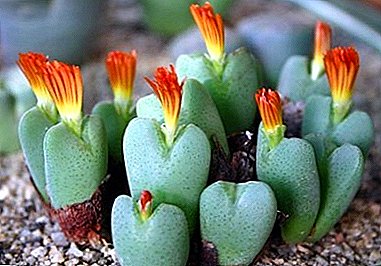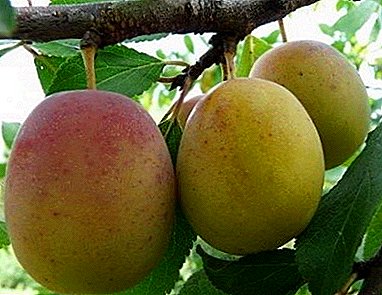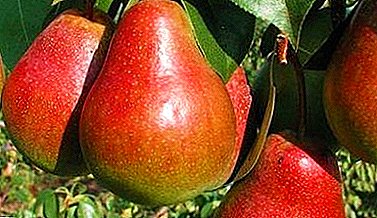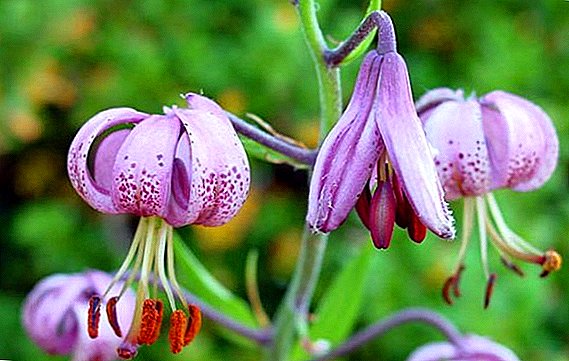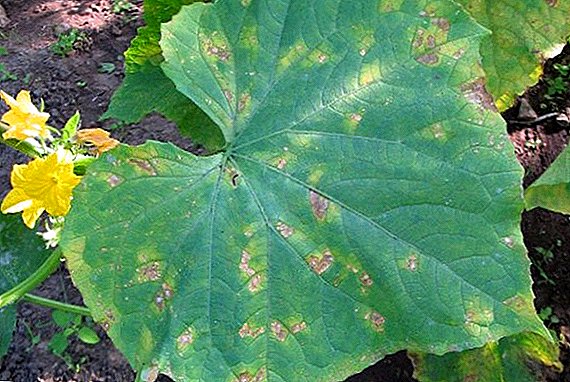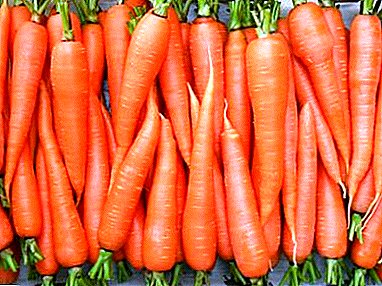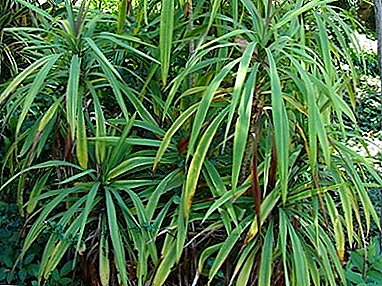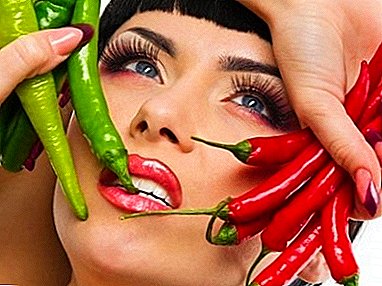
Once in the city of Cayenne was the port, where they brought rare spices from South America.
One of the most expensive and sought after was the hot pepper, which was eventually called Cayenne.
Both before and now they are preparing a seasoning known as “Chile”.
How to grow and what to eat?
More than two centuries ago, pepper learned to cultivate in Europe.
Surprisingly, even the Russian climate came to taste for this tropical guest. It is successfully grown in greenhouses, in the open field and right at home, on the windowsill.
Thanks to its small bright pods, it looks very decorative.
In addition, the breeders brought a large number of varieties of cayenne pepper specifically for growing at home.
These are small dense bushes from 15 to 50 cm high. They can bloom almost all year round. But their small light flowers are inferior in beauty to fruits.
Reference! The pens can be of various shapes: elongated and almost round, similar to cucumbers or small pumpkins.
 On the bush, they can hang like earrings or stick like candles.
On the bush, they can hang like earrings or stick like candles.
The color of the fruit can also be very different: there are varieties with red, yellow, orange, brown, green, purple and even black fruits.
And the benefits of such a flower are obvious: seasoning is always at hand.
In addition, it has a pronounced bactericidal effect, that is, it cleans the air in the rooms. In homes where such a pepper grows, people get sick less often.
The video contains a general description of Cayenne pepper:
//youtu.be/psKSFkYT09s
A photo
The photo shows "Cayenne" pepper:




Home care
 So what is - "Cayenne" pepper?
So what is - "Cayenne" pepper?
This is a completely unpretentious plant. With proper care at home, it will delight the crop to five years in a row.
What are the conditions he needs to create?
Seeds
Reference! Within each pod are a few dozen seeds.
In cooking, they are used only by the most courageous: they are several times sharper than the flesh. If desired, these plants can grow new plants.
Care after purchase
Having bought "Cayenne" pepper in the store, you should immediately think about his transplant. Flowers in the store grow in the soil, most of which is peat. In such a plant is convenient to transport, as it is very light. But to leave a flower in it for a long time is destructive.
In addition, the pots in which the plants are sold are not suitable for cultivation: as a rule, they are already quite small.
 However, if the plant is covered with fruits, it can discard them after transplantation.
However, if the plant is covered with fruits, it can discard them after transplantation.
In this case, it is better to stay on a more benign option - handling.
To do this, the plant is placed in a new pot, along with a lump of earth from the old. A void filled with new soil.
After this procedure, “Cayenne” pepper is plentifully watered and put on the window sill.
Lighting
"Cayenne" pepper - light-loving plant. It feels best on the southwest and southeast windows. Determine whether he has enough light, you can by leaves.
With its deficiency, they will begin to fade, in critical situations - to fall off. Most likely, this will happen in winter, with a decrease in daylight hours. In this case, the pepper needs to provide additional lighting with fluorescent lamps. They are installed in such a way that from the bulb to the top of the flower there remains at least 25 cm.
Watering
The Cayenne pepper does not need frequent watering. But you need to make sure that the earth does not dry out completely. If in the room where the plant grows, dry air, the plant will need regular spraying.
Pruning
Bushes cayenne pepper - quite lush by themselves. However, if they pinned, the plant will become even more dense. If desired, a bush of any shape can be formed from it.
Important! Cut pepper is better in the fall or spring, removing dried shoots and overgrown branches, spoiling the appearance of the plant.
How to grow from seed?
 Seeds of “Cayenne” pepper can be bought in a store or taken from pods.
Seeds of “Cayenne” pepper can be bought in a store or taken from pods.
To do this, they are carefully removed and spread between two wet wipes.
Here they will remain until germination. It is important to ensure that the wipes are always kept wet.
Sprouts should turn in 2 - 3 days. After that, the peppers are planted in pots for seedlings, where they must grow and get stronger. At this time, they need a high temperature - 25 - 29 degrees, and a lot of light. However, from direct sunlight they still need to be protected.
As soon as two pairs of true leaves appear on the sprouts, you can choose the strongest and replant them in pots.
Priming
The ideal soil for cayenne pepper is a mixture of approximately equal parts of loam, humus and sand. You can use the already purchased ground. In this case, the choice should be stopped on what is intended for tomatoes.
Fertilizer
During the first 3 to 4 months after transplantation, the pepper will not need additional feeding., he will have enough nutrients in fresh soil. And then about once a month it will be possible to apply fertilizer. Behind them you can go to the store for gardeners, because the pepper, though decorative, but still a vegetable. He will suit those that are intended for tomatoes.
Benefit and harm
 For good care, “Cayenne” pepper will thank the owners with a variety of fruits that are not only beautiful, but also extremely useful.
For good care, “Cayenne” pepper will thank the owners with a variety of fruits that are not only beautiful, but also extremely useful.
They contain almost all the vitamins known to science today.
For example, vitamin Awhich is also known as carotene, is more in it than in carrots, and there is more vitamin C than in lemons.
It is he who provides the spicy taste of seasoning. Once in the human body, it has a relaxing effect on the muscles, warms, helps with radiculitis. And also helps to lose weight: speeds up the metabolism and promotes the rapid burning of calories.
The use of cayenne pepper is limited to those who suffer from the following diseases:
- Colitis;
- Gastritis;
- Gastric and duodenal ulcer;
- Angina pectoris;
- Epilepsy.
The video presents an interesting use of Cayenne pepper:
Diseases and pests
"Cayenne" pepper - a strong plant, it is little exposed to pests and diseases. Sometimes it can be attacked by gray mold. In this case, the infected areas are removed, and the pepper is treated with drugs that can be bought in specialized stores.
- Habanero;
- "Bell";
- "Jalapeno";
- "Spark".
Growing “Cayenne” pepper at home is not at all difficult. This plant is strong and unpretentious. It is ready to please with its fruits, which are as beautiful as they are useful.


